Ever wondered about Bohol’s place in the Philippines? Are you curious about where it lies on the nation’s map? This article will clear up where Bohol is located. We’ll dive into its special traits and what makes it stand out. Let’s explore the wonders of this charming island province together!
Key Takeaways:
- Bohol is situated in the Central Visayas region of the Philippines.
- It is part of Region VII, also known as Central Visayas.
- The province is well-known for its natural wonders, historical significance, and vibrant culture.
- Bohol offers a diverse range of tourist attractions, including the famous Chocolate Hills and the picturesque beaches of Panglao Island.
- Stay tuned to discover more about Bohol’s fascinating geography, culture, and more!
Geographical Location of Bohol
Bohol is in the Central Visayas region of the Philippines. It has a special location that boosts its beauty and charm. The province lies between the Camotes Sea to the north and the Bohol Sea to the south.
This position offers lovely coastal views and fun water activities. Bohol’s shape is mostly oval, with a volcanic core and limestone cover. This mix leads to a varied landscape that draws tourists globally.
The island is known for its “chocolate hills” in the west-central area. There’s also a central plateau around Carmen town. It has amazing views of lush greenery and hills.
This plateau shows the island’s geological past, adding to its beauty. Exploring Bohol’s geographical features is an unforgettable journey. The coastlines and chocolate hills make Bohol’s nature second to none.
Administrative Divisions of Bohol
Bohol is in the Central Visayas of the Philippines. It has 1 city, Tagbilaran, and 47 municipalities. The area is home to 1,109 barangays. Tagbilaran is the capital and biggest city. It’s the main spot for administration. It offers many services to people and visitors.
Municipalities of Bohol
The municipalities in Bohol are crucial for its governance and growth. They are all over the island. Each one has its own unique charm and attractions. Anda is peaceful with coasts. Loboc is historic with great scenes. These places show the rich culture and nature of Bohol.
Here is a list of some municipalities in Bohol:
- Tubigon
- Alburquerque
- Alicia
- Baclayon
- Balilihan
- Batuan
- Bien Unido
Barangays in Bohol
Barangays are the smallest government units in Bohol. There are 1,109 of them. Each barangay helps build the community’s lively spirit. They are in Tagbilaran and other municipalities. These places help with livelihood, culture, and giving residents a sense of belonging.
Some of the barangays in Bohol include:
In the municipality of Loboc:
- Poblacion Sawang
- Taytay
- Cambance
In the municipality of Carmen:
- San Isidro
- Carmen
- Poblacion
Exploring Bohol’s different areas lets visitors truly experience its rich culture. They can dive into the history and marvel at the natural beauty.
Bohol’s Population and Area
Bohol is in the Central Visayas region of the Philippines. It has a diverse population and a large area. As of the 2020 census, about 1,394,329 people live there. This ranks it as the 20th most populous province. It covers 4,820.95 square kilometers or 1,861.38 square miles.
Many different ethnic groups live in Bohol, showcasing its rich culture and history. It’s famous for its hospitality. This makes it a great place for tourists from all over.
| Population | Land Area |
|---|---|
| 1,394,329 | 4,820.95 sq km (1,861.38 sq miles) |
Tourist Attractions in Bohol
Bohol is a tourist’s dream, with a variety of sights to see. It has beautiful beaches and amazing natural wonders. Everyone can find something fun to do here.
- Bohol Beaches: Known for its stunning white sandy beaches, Bohol is perfect for beach lovers. Alona Beach on Panglao Island is famous for its clear waters. It’s great for diving and snorkeling.
- Chocolate Hills: The Chocolate Hills are a must-see in Bohol. Over 1,200 cone-shaped hills spread out over the area. They look like chocolate kisses when the grass is brown in the dry season.
- Panglao Island: Panglao Island, near Tagbilaran City, is a beach paradise. It has beautiful beaches and clear waters, making it perfect for diving and snorkeling. The island is full of colorful coral reefs and marine life.
- Philippine Tarsiers: Bohol is also home to the tiny Philippine tarsier. Visitors can see these cute animals at the Tarsier Conservation Area in Corella. Here, you can learn about how to protect these unique creatures.
Looking for a relaxing beach day, adventure in nature, or wildlife encounters? Bohol offers all of these experiences. Discover the beauty and magic of this wonderful place.
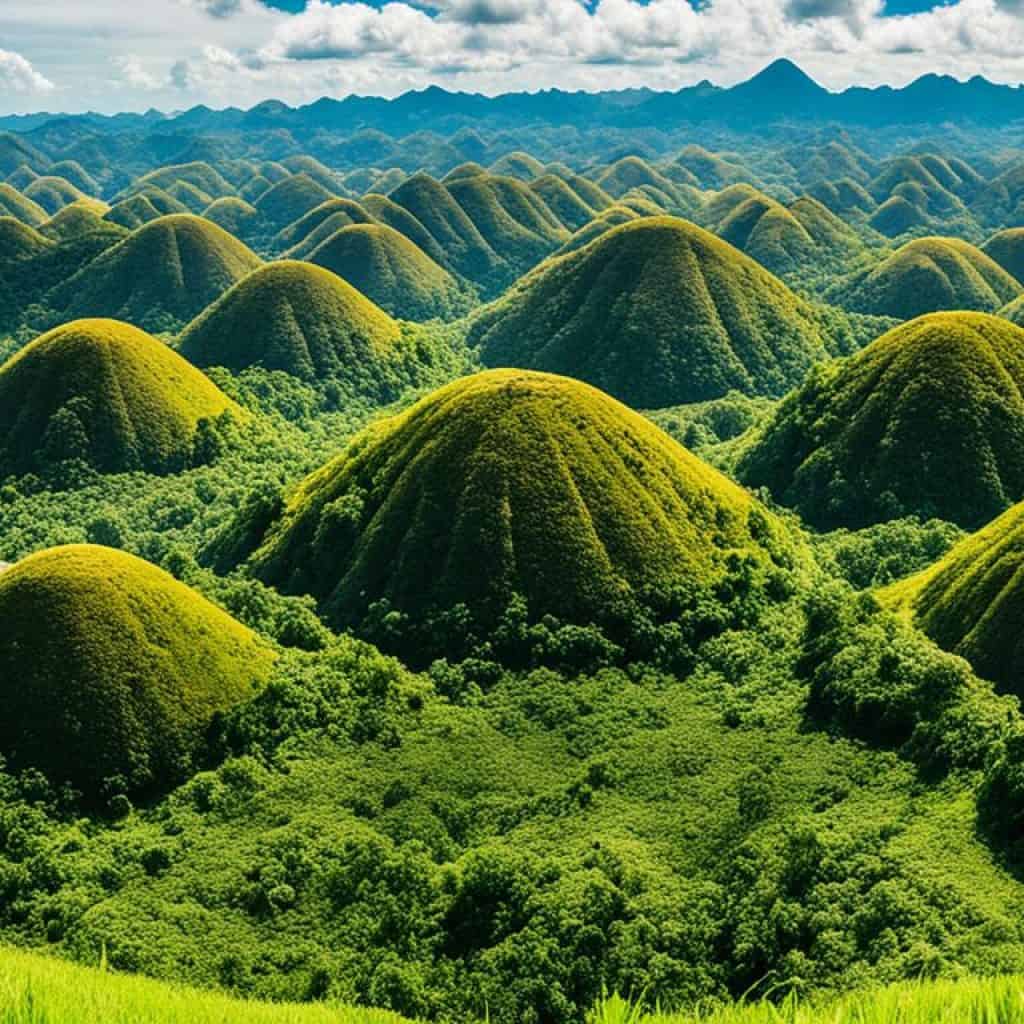
Bohol’s Historical Significance
Bohol is full of history that highlights its important role in the Philippines’ history. It’s known for the blood compact or “sandugo” and as the birthplace of a remarkable president. Let’s dive into the historical facts of this province.
The Sandugo: A Symbol of Unity
In 1565, one crucial event took place in Bohol, known as the blood compact or “sandugo.” This pact was between Spanish explorer Miguel López de Legazpi and Datu Sikatuna. They promised friendship and cooperation. The sandugo is a symbol of unity and trust, celebrated at the Sandugo Festival every year.
Birthplace of Carlos P. Garcia
Carlos P. Garcia, the 8th President of the Philippines, was born in Talibon, Bohol. He led the country from 1957 to 1961. His time as president was noted for agricultural changes and promoting Filipino values.
“Bohol’s history shows its rich culture and the impact of its people. From the meaningful sandugo to being Carlos P. Garcia’s birthplace, its past shapes its identity today.”
| Historical Events | Year |
|---|---|
| Blood Compact (sandugo) between Miguel López de Legazpi and Datu Sikatuna | 1565 |
| Birth of Carlos P. Garcia | November 4, 1896 |
Recent Achievements and Recognition of Bohol
Bohol Island has been getting a lot of attention lately. It has achieved significant recognition both locally and worldwide. The island has seen a mix of triumphs and issues, from being named a UNESCO Global Geopark to facing controversies.
In 2023, Bohol Island was honored as the first UNESCO Global Geopark in the Philippines. This title celebrates the area’s special geological features, rich biodiversity, and cultural history. It shows Bohol’s dedication to protecting the environment and promoting sustainable tourism.
On the artistic front, Bohol shined brightly when Elvin Vitor won the prestigious Leonardo Da Vinci International Prize. Vitor’s amazing paintings showed Bohol’s strong creative side to the world.
The province also made news by setting a swimming record with the Olotayan Island-Roxas swim challenge. This event highlighted Bohol’s love for adventure and feats of strength.
However, Bohol has faced issues related to its tourist spots. There has been concern over the development of the Chocolate Hills. These issues lead to essential discussions on how to grow tourism responsibly and protect the environment and culture.
A conflict arose when a resort’s business permit was revoked, highlighting the struggles in tourism development. It serves as a lesson on the importance of balancing economic growth with responsible tourism practices.
Bohol’s Recent Achievements and Controversies:
| Achievements | Recognition |
|---|---|
| Designation of Bohol Island as the first UNESCO Global Geopark in the Philippines | UNESCO Global Geopark title |
| Victory of Bohol artist Elvin Vitor in the Leonardo Da Vinci International Prize | Artistic Excellence |
| Setting a record with the Olotayan Island-Roxas swim challenge | Swimming Achievement |
| Controversies | Concerns |
| Construction controversies related to tourist attractions in the Chocolate Hills | Environmental Impact |
| Revocation of a resort business permit | Tourism Development Challenges |
Bohol’s recent successes show its potential as a top destination in the Philippines. It’s crucial to celebrate these wins while tackling the challenges. This way, Bohol can grow sustainably, keeping its natural and cultural gems safe.
Unique Culture and Language of Bohol
The culture of Bohol mixes local traditions with Spanish and Mexican elements. This combination has created a unique identity for Bohol. It is seen in dance, music, food, and religious practices. Bohol’s culture shows its deep history, making it interesting to visit.
Bohol’s main language is Boholano, a form of Cebuano. It’s widely spoken by the locals. While Tagalog and English are common, Boholano is used daily. It ties the community together.
“Boholano, our dialect, is dear to our hearts. It tells of our history and traditions. It connects us to our roots, creating a strong bond.”
– Local Boholano
Boholano is more than a language. It gives Boholanos a sense of identity and unity. This language links individuals and families, keeping the region’s unique culture alive.
Hispanic Influences in Bohol’s Culture
Spanish and Mexican colonization has deeply impacted Bohol’s culture. Spanish customs and traditions have shaped Bohol. Dances like the Kuradang and Tinikling reflect this influence with their elegance and energy.
Music plays a big role in Bohol’s cultural life. Instruments such as the banduria and octavina create captivating tunes. Bohol’s food also shows these influences. Dishes like paella and lechon blend Spanish and Mexican flavors with local twists.
Bohol’s culture, rich with Spanish and Mexican influences, shows the people’s resilience. It celebrates the past and present. Visitors are invited to dive into the traditions, languages, and flavors that make Bohol stand out.
American Colonization and World War II
After the Spanish-American War, Bohol became a key part of American colonization in the Philippines. The U.S. took control in 1898, including Bohol. This era brought major changes to Bohol’s political, economic, and educational scenes. It helped shape the province’s future.
The calm under American rule in Bohol was disrupted by World War II. In 1941, Japanese forces invaded the Philippines, hitting Bohol too. This brought great hardship to the locals. Yet, they stood united and formed guerrilla groups. They resisted the Japanese, adding to the Philippine resistance effort.
The Bohol guerrilla forces were brave despite the Japanese occupation. Known as the Boholano guerrillas, they teamed up with American forces. They carried out sabotage, gathered intelligence, and ambushed the enemy.
Infographic:
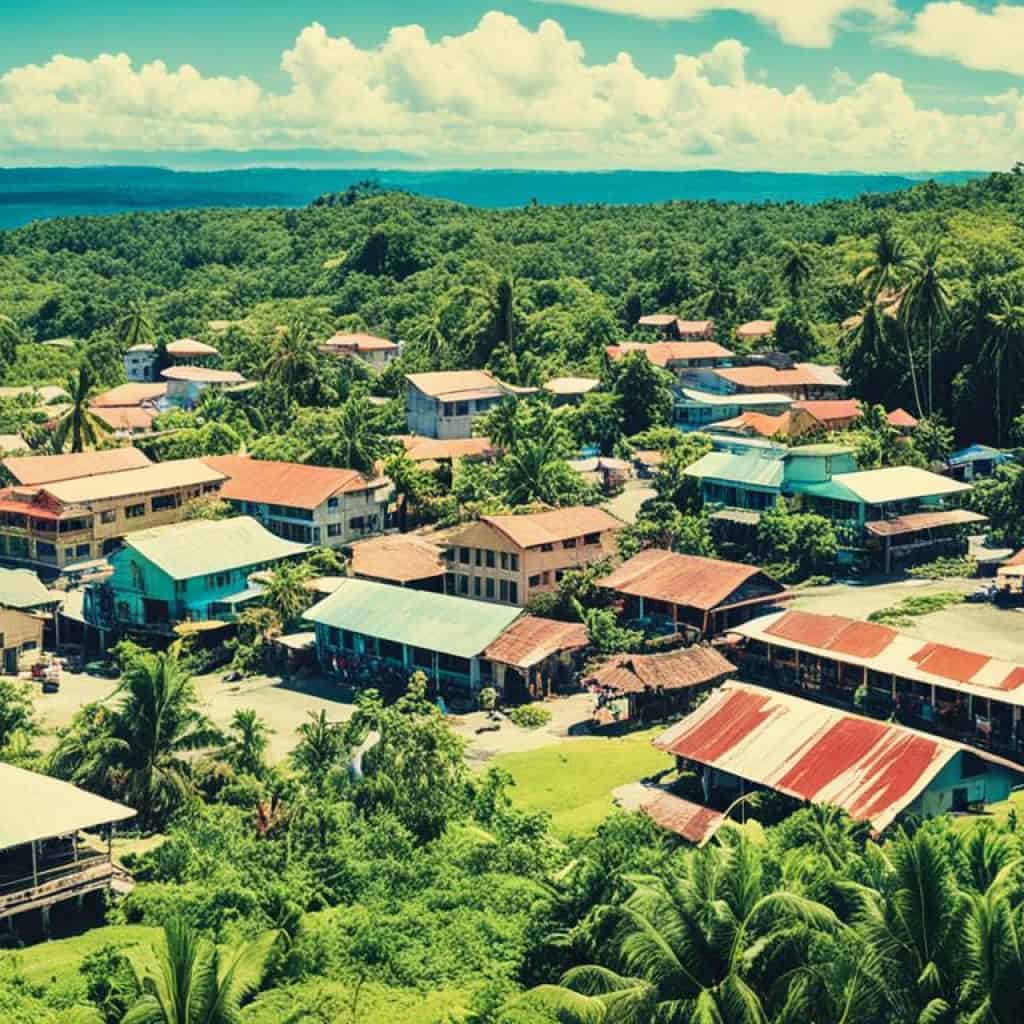 |
After long years under Japanese control, Bohol was freed in 1945. Filipino and American forces worked together to end the occupation. The island celebrated its freedom and the return of self-rule.
The American colonization and Japanese occupation deeply affected Bohol’s history. These times tested the Boholanos’ resilience. They helped form their strong identity and spirit.
Economic Activities in Bohol
Bohol’s economy thrives on agriculture, tourism, and small-scale mining. Agriculture is key, focusing on rice, corn, and coconuts. The province’s fertile lands and good climate are perfect for farming. This helps provide a constant supply of food, making the area more secure.
Tourism is crucial for Bohol’s growth. It is home to the famous Chocolate Hills and beautiful beaches on Panglao Island. These attractions bring in visitors worldwide, supporting local businesses and jobs. Additionally, Bohol’s rich culture and festivals like Sandugo add to its allure for tourists.
Small-scale mining of manganese is another part of Bohol’s economy. The mining contributes to the economy and jobs for residents. Even so, the impact on the environment and community is closely monitored.
Overview of Economic Activities in Bohol:
| Industry | Main Activities |
|---|---|
| Agriculture | Cultivation of rice, corn, and coconuts |
| Tourism | Natural attractions, beaches, cultural festivals |
| Small-Scale Mining | Extraction of manganese |
Bohol is working on growing and diversifying its economy for sustainable progress. By combining productive farming, strong tourism, and careful mining, it aims to boost prosperity and life quality for its people.
Climate and Weather in Bohol
Bohol has a tropical climate with hot temperatures and humidity year-round. It has two main seasons that affect its weather:
- The northeast monsoon or Amihan from November to April
- The southwest monsoon or Habagat from August to October
The Amihan season is Bohol’s dry and cool time. It has less rain and cooler temperatures. This makes it great for outdoor adventures and seeing the island’s beauty.
On the other hand, the Habagat season is warmer with more rain. There are often heavy rains. If you visit during this time, expect tropical showers and check the weather before planning outings.
Bohol can get typhoons, mainly in the rainy season. But nearby mountains help lessen their effects.
| Month | High (°C) | Low (°C) |
|---|---|---|
| January | 29 | 22 |
| February | 29 | 22 |
| March | 30 | 23 |
| April | 31 | 24 |
| May | 32 | 25 |
| June | 32 | 25 |
| July | 31 | 24 |
| August | 31 | 24 |
| September | 31 | 24 |
| October | 31 | 24 |
| November | 30 | 23 |
| December | 29 | 22 |
Bohol is usually warm, so bring light clothes and sun protection. Hats, sunglasses, and sunscreen are key for comfort in the tropics.
Transportation and Infrastructure in Bohol
Bohol, in the Central Visayas of the Philippines, offers several transport options. These meet the needs of locals and tourists. Choose to travel by land, air, or sea; Bohol has options ready.
By Air: Tagbilaran City Airport
The main way into Bohol is the Tagbilaran City Airport. It is the primary airport for domestic flights. This connects Bohol to other major Philippine cities.
By Sea: Ports of Tagbilaran, Ubay, and Jagna
For sea travel lovers, Bohol has many ports. Ports like Tagbilaran, Ubay, and Jagna link Bohol to nearby islands. They make travel easy for anyone coming by ferry.
Well-connected Road Network
Bohol boasts a well-connected road network. This network allows easy access to many places and tourist spots. Traveling within the province is convenient and fun, whether to the countryside or Chocolate Hills.
| Mode of Transportation | Key Infrastructure |
|---|---|
| By Air | Tagbilaran City Airport |
| By Sea | Ports of Tagbilaran, Ubay, and Jagna |
| By Land | Well-connected road network |
No matter how you decide to travel, Bohol’s infrastructure supports your journey. Both the journey and destination in Bohol promise memorable moments.
Education and Healthcare in Bohol
Bohol is dedicated to top-notch education and healthcare for everyone. The province has great schools and universities for all levels. Students get the knowledge and skills they need for the future.
In healthcare, Bohol has many hospitals and facilities for its community. They offer a wide range of services, from check-ups to special treatments. This ensures everyone’s health is taken care of.
Bohol is perfect for those looking for good education or healthcare. Its commitment improves life and helps everyone grow.
Conclusion
Bohol is in the heart of the Philippines and is truly captivating. It’s known for natural wonders, rich history, and vibrant culture. Tourists love the breathtaking Chocolate Hills and Panglao Island’s sandy beaches. It’s a unique spot that offers beauty and charm.
Even with controversies around tourism development, Bohol remains a top choice for travelers. Its stunning scenery and friendly vibe captivate many. Here, you can explore the countryside, dive in clear waters, or enjoy the local culture. Bohol ensures an experience that stays with you.
The Chocolate Hills and tiny Philippine tarsiers highlight Bohol’s diverse nature. Its history is filled with fascinating stories, like the blood compact. Plus, its culture and food reflect Spanish and Mexican influences. This creates a rich and flavorful mix of traditions.
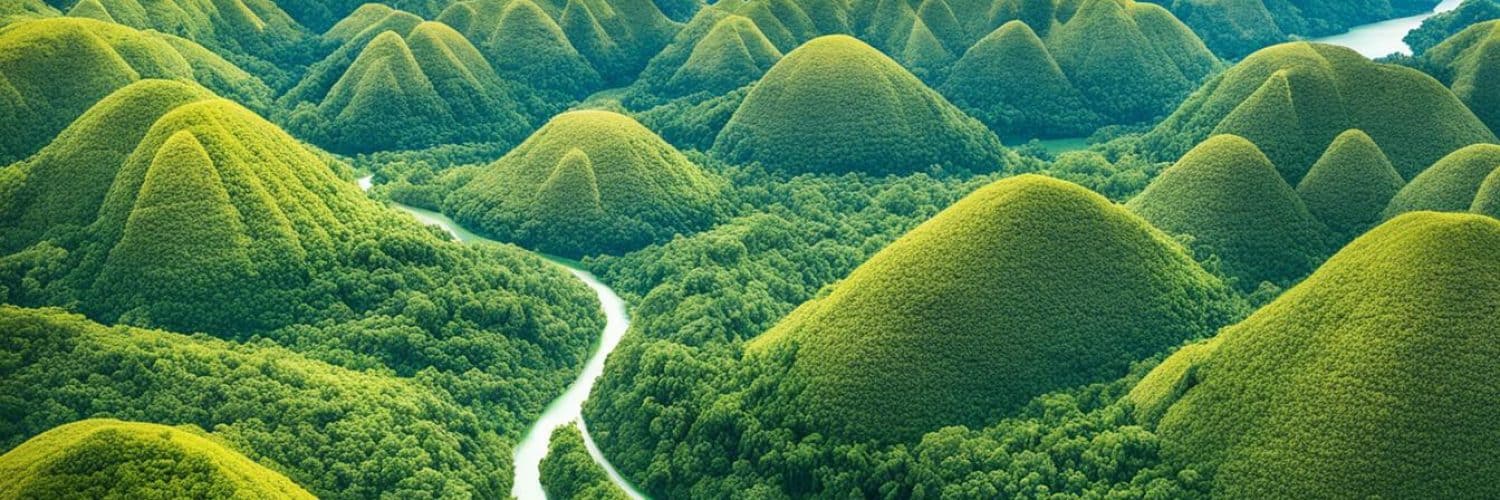
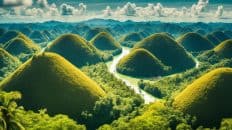
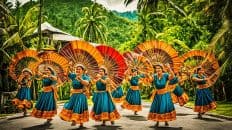
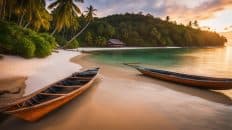














Add comment